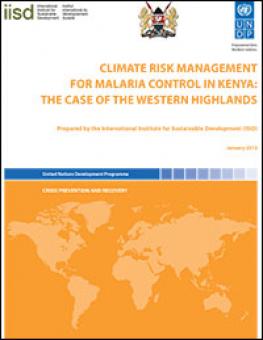
Climate Risk Management for Malaria Control in Kenya: the case of the western highlands
Despite its declining prevalence in most parts of Kenya, malaria infection continues to be the main cause of disease and mortality in the country.
It is also currently re-emerging in the western highlands due to a combination of climatic and non-climatic factors. The population of the Kenyan Western highlands is highly vulnerable to malaria epidemics. If the existing socioeconomic characteristics (such as deforestation and other land-use changes, high levels of poverty, and misaligned health interventions) remain constant, the projected rise in temperature and changes in rainfall patterns may exacerbate existing health risks and create new ones. In addition to strengthening the health system and improving collaboration among actors engaged in malaria control and climate risks, two actions should be prioritized for malaria control in the face of climate variability and change: 1) improving the monitoring and prediction of malaria epidemics in all regions by taking into account climate, health and socio-economic data, as well as by combining local knowledge of weather change with scientific knowledge, and 2) promoting a switch from top-down, universal interventions focused on technical and financial responses to more bottom-up, targeted interventions adapted to local needs and specificities that account for socio-cultural barriers.
Participating experts
You might also be interested in
Climate Risks, Vulnerability and Governance in Kenya: A review
Climate-related risks adversely affect the lives and livelihoods of the people of Kenya and threaten the country's near- and long-term development prospects. The paper provides sector-specific recommendations to address knowledge gaps and general recommendations to strengthen response capacity.